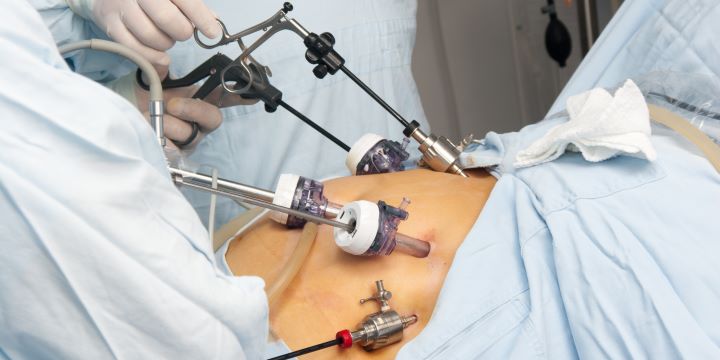Obesity, a complex health issue impacting millions worldwide, not only affects the quality of life but also increases the risk of various chronic diseases. It is no wonder that the quest for effective weight management strategies is more pressing than ever.
Table of Contents
- Introduction to Non-Surgical Weight Loss Solutions
- Understanding Adjustable Gastric Balloons
- The Science Behind Gastric Balloons
- Who is a Candidate for Gastric Balloon Procedures?
- The Procedure: What to Expect
- Life with an Adjustable Gastric Balloon
- Nutritional Guidance and Lifestyle Changes
- Success Stories and Patient Experiences
- Wrapping Up: Is an Adjustable Gastric Balloon Right for You?
Key Takeaways
- An adjustable gastric balloon is a valuable non-surgical tool for losing weight.
- The effectiveness of gastric balloons requires a commitment to significant lifestyle and dietary changes.
- Emerging technologies continue to refine and improve the gastric balloon as an option for obesity management.
Introduction to Non-Surgical Weight Loss Solutions
With the global increase in obesity rates and the health complications associated with it, the landscape of weight loss interventions has broadened significantly. Today, individuals seeking to shed excess pounds have many non-surgical options, each catering to different preferences, lifestyles, and medical profiles. These interventions range from dietary modifications and physical exercise regimes to pharmacological treatments and non-surgical medical devices. In this scenario, the gastric balloon, an adjustable and non-invasive device, has emerged as a promising tool for those who seek a middle ground between diet changes and surgical intervention.
Understanding Adjustable Gastric Balloons
Gastric balloons represent an innovative approach to the fight against obesity. This fight has traditionally been waged with strict diet plans, grueling workouts, and invasive surgical procedures like gastric bypass or sleeve gastrectomy. The concept is elegantly simple: a soft, durable balloon is temporarily placed into the stomach and inflated, which reduces the space available for food and thus assists in controlling appetite. What differentiates adjustable gastric balloons from their predecessors is the ability to adjust the volume of the balloon after the initial placement, allowing for a customized approach to each patient’s weight loss journey. The appealing traits of this technology are its reversibility and adjustability, factors that contribute to its adaptability to the patient’s evolving needs.
The Science Behind Gastric Balloons
The underpinning mechanism of gastric balloons is physical: by occupying space within the stomach, the balloon simulates the sensation of fullness, prompting the individual to consume smaller meals. It is a built-in portion control, helping individuals adhere to a calorie-restricted diet more efficiently. Studies have shown that besides the physical restriction, these devices also impact gastrointestinal hormones that regulate hunger and satiety, contributing to a decrease in overall calorie intake and successful weight loss when used with lifestyle modifications.
Who is a Candidate for Gastric Balloon Procedures?
While an adjustable gastric balloon may seem attractive, it is not a one-size-fits-all solution. Ideal candidates for the procedure are typically those with a body mass index (BMI) of 30 to 40, who have yet to reach their weight loss goals through traditional methods alone, and who are willing to commit to a concerted effort involving diet, exercise, and behavior modification. Those considering the procedure should engage in in-depth discussions with healthcare professionals to understand the full scope of the process, ascertain their suitability, and address any underlying health concerns that could affect the safety and efficacy of the balloon.
The Procedure: What to Expect
The gastric balloon insertion is usually an outpatient procedure conducted under sedation, taking about 20 to 30 minutes. During this time, a deflated balloon is guided through the esophagus and into the stomach, filling with either air or saline solution to an appropriate volume. After the procedure, patients may experience nausea or discomfort, which typically resolves within a few days as the body adjusts. Stringent follow-up schedules are a critical part of post-procedure care, ensuring that the balloon functions correctly and that patients receive the necessary guidance for effective weight loss.
As with any medical intervention, understanding potential risks and managing expectations is paramount. Side effects can include gastrointestinal symptoms such as cramping, nausea, and vomiting.
Life with an Adjustable Gastric Balloon
Adjusting to life with a gastric balloon is a significant lifestyle shift that can be both challenging and rewarding. Beyond the physical sensation of the balloon, patients will need to navigate changes in dietary habits, learn to recognize genuine hunger cues and make conscious choices about meal composition and size. Engagement with professionals like dietitians and mental health experts plays a crucial role in the ongoing support and success of individuals with a gastric balloon. By combining the physical tool of the balloon with psychological and nutritional guidance, patients set themselves up for the highest level of success.
Nutritional Guidance and Lifestyle Changes
Adopting and maintaining healthy nutritional habits is essential when living with a gastric balloon. Patients typically begin with a liquid diet, gradually transitioning to pureed foods and eventually to solid foods, all within a prescribed timeline. This progression allows the stomach to adapt while optimizing nutrition within the new caloric constraints. Physical activity is equally important; not only does it amplify weight loss, but it also enhances mood, cardiovascular health, and overall well-being. Patients should construct a realistic exercise regimen that complements their nutritional plan and fits into their lifestyle. The invaluable support system of nutritionists, trainers, and peer groups often facilitates this transition.
Success Stories and Patient Experiences
Real-life testimonials showcase the transformative impact that a gastric balloon can have. From improved mobility and health markers to the emotional uplift of achieving significant weight loss, the stories of gastric balloon patients can be potent motivational tools. These narratives often highlight the importance of mental resilience, a robust support framework, and an unwavering commitment to the lifestyle changes that accompany the procedure.
Wrapping Up: Is an Adjustable Gastric Balloon Right for You?
For those striving towards weight loss, the decision to opt for a gastric balloon should be informed by thorough research, candid discussions with medical experts, and introspection about personal goals and commitments to change. While the concept of a reversible and non-permanent tool can be appealing, the ultimate success of such interventions relies heavily on the individual’s motivation and readiness to adhere to significant lifestyle alterations. Prospective patients can make empowered decisions that align with their health objectives by considering all facets of the procedure and its aftermath.
Potential candidates can explore scientific findings and professional viewpoints from reputable sources to complement personal research and consultations.




